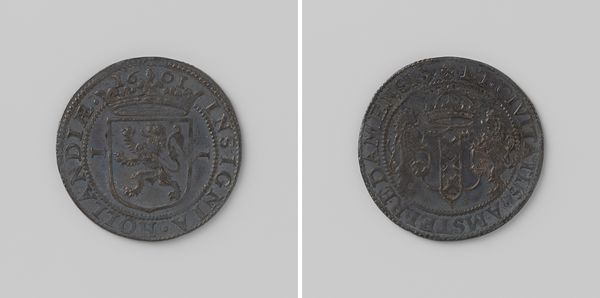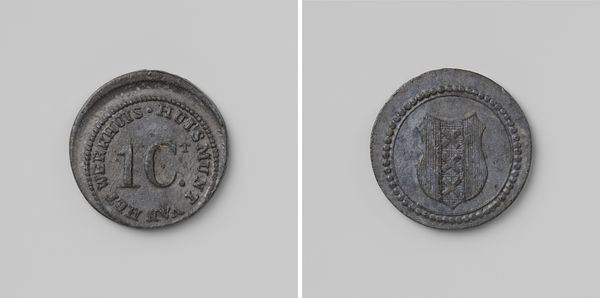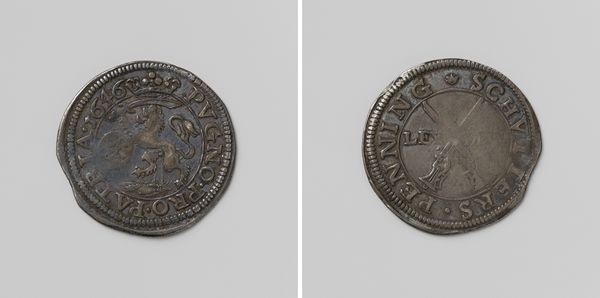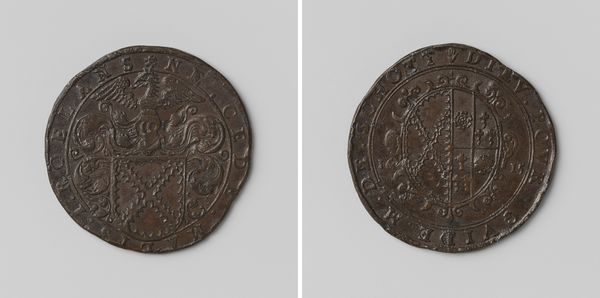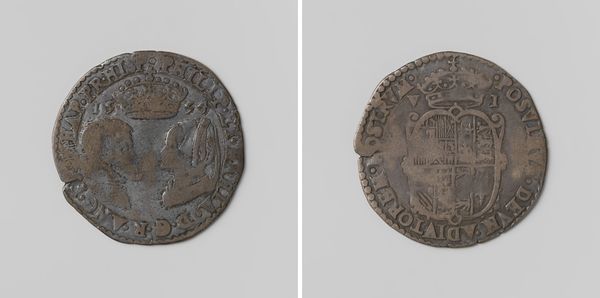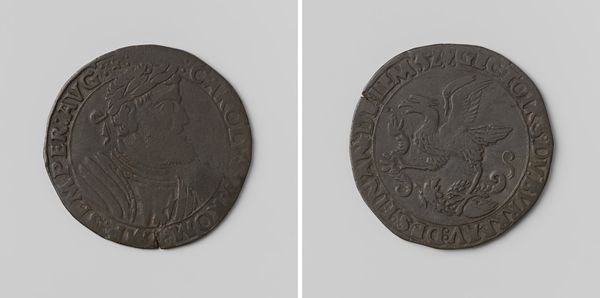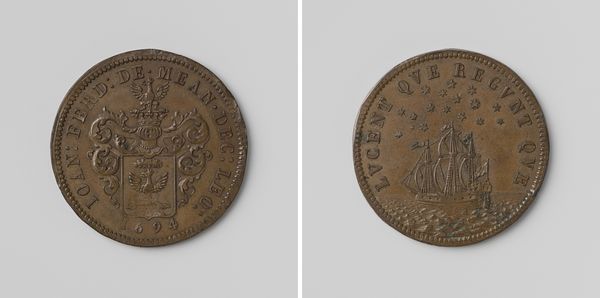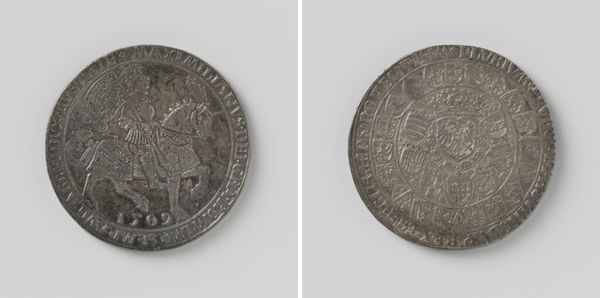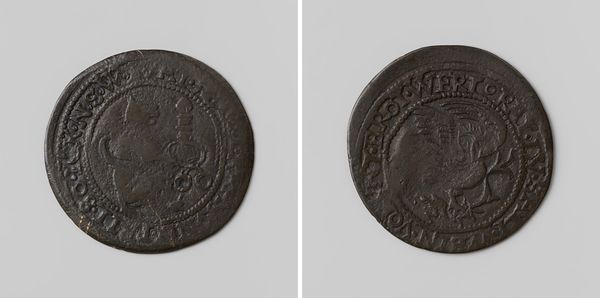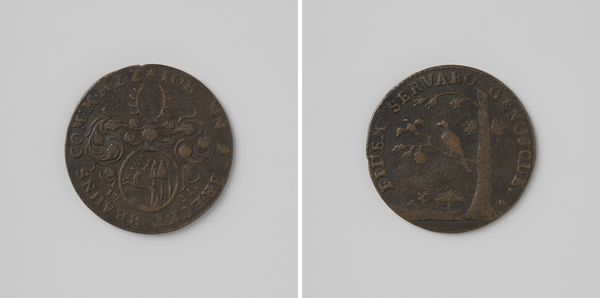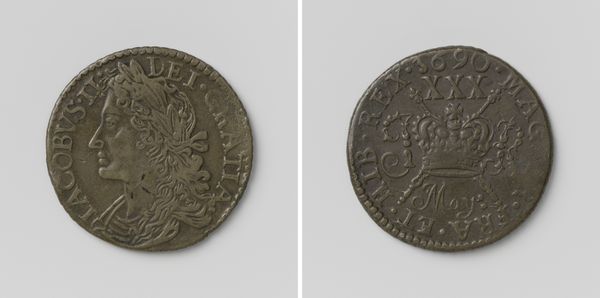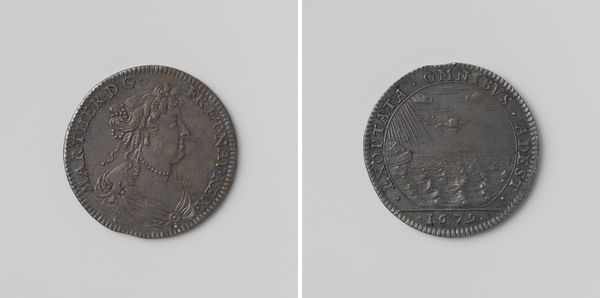
print, metal, engraving
#
medieval
#
dutch-golden-age
# print
#
metal
#
geometric
#
history-painting
#
coin
#
engraving
#
miniature
Dimensions: diameter 2.5 cm, weight 4.69 gr
Copyright: Rijks Museum: Open Domain
Curator: Well, isn't this intriguing! What we're looking at is an engraving titled "Schutterij van Leiden," dating back to 1646, created by George Pullein. Editor: My initial thought is one of somber grandeur, despite its size. It feels almost weighty, historical, even before understanding its context. Curator: The symbolism is quite rich here, isn't it? You have the heraldic lion of Leiden, crowned, clutching a sword and shield, conveying power, pride and the idea of a defended community. The lettering around the rim evokes a sense of tradition. Editor: Precisely! This is more than a mere engraving; it's a concentrated dose of Leiden's civic identity. What was the societal position of this "Schutterij"? Curator: The Schutterij, or civic guard, held considerable power and social sway during the Dutch Golden Age. They weren’t simply soldiers; they were community leaders and served an essential role in policing and civic life. Editor: It almost feels like propaganda in miniature, doesn’t it? Given that these engravings, often intended for wider circulation, played an integral role in constructing and cementing social values. Curator: Indeed! Beyond its practical function as a kind of "coin," we are seeing an object used to broadcast the city's power but also the virtue and the social importance of those who belonged to the Schutterij. This speaks volumes about how societal status was both constructed and consumed at the time. Editor: This resonates so powerfully, viewing a tiny emblem reflecting broader societal themes and the social significance of such public displays, however small, in the theater of politics. I feel an extraordinary continuity between now and then. Curator: It really invites us to examine what civic duty means, doesn’t it? How public role of the arts can affect civic action. Editor: It does. I’m struck how something so small could carry such significance for the civic body in the 17th century.
Comments
No comments
Be the first to comment and join the conversation on the ultimate creative platform.
